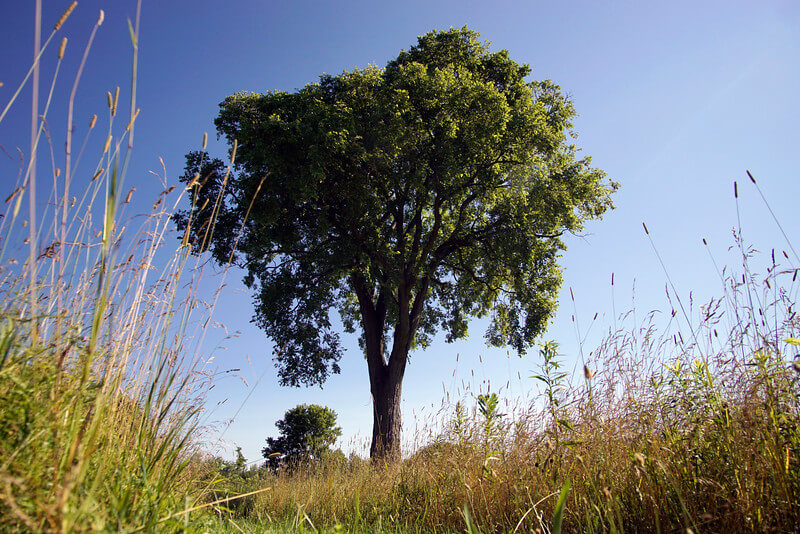Elms return to the park

Stately elm trees with their characteristic vase-shape crowns once towered over forest canopy and urban landscape alike. Because of their size, abundance and beauty, elms would have been readily recognized by anybody living within their natural range. Today, because of Dutch elm disease (DED) mature elm trees are largely absent from our forests and are found in our cities and towns only where municipalities have made substantial investments in their preservation. Naturally occurring elm trees remain abundant but rarely grow to diameters greater than 10 inches before succumbing to DED. Fortunately, disease-resistant elm trees are now available and being used for reforestation and urban plantings. Soon this missing component of the ecosystem will be restored to our park.
On Earth Day, April 22, the Charlotte Park and Wildlife Refuge Committee, your tree warden and a hardy group of volunteers will plant 25 disease-resistant elm trees in the park. The plantings are funded with a grant from the Vermont Urban and Community Forestry Program. Additional support will come from The Nature Conservancy, which is donating an additional 15 trees of three varieties to be planted at the park and elsewhere in town.
Volunteers are invited to help with the plantings. We will meet at the Thorp Barn off of Route 7 at 11:00 a.m. on the 22nd and then proceed to the planting sites, where we will dig, plant, water and mulch. Depending on the number of volunteers, crews may also tackle other chores such as invasive plant removal and trail work. At 1:00 p.m. we will break for a communal lunch provided by the Parks Committee. Please let me know if you plan on attending by emailing me.

